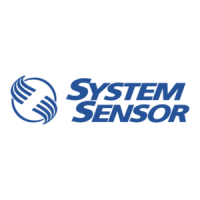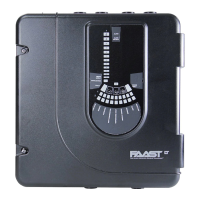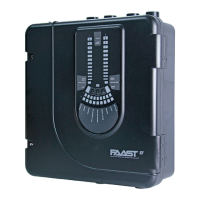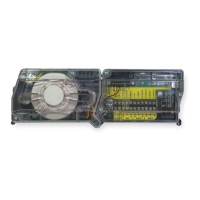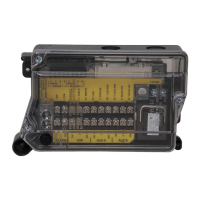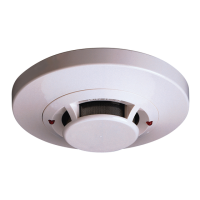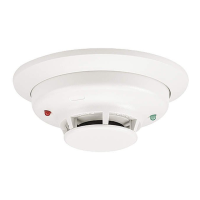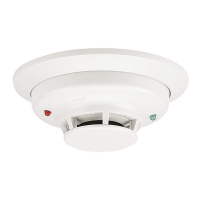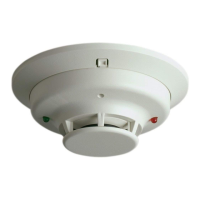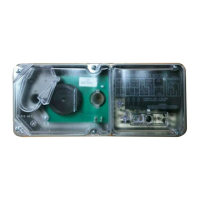N200-25-00 2 I56-2424-04R
Specifications (continued)
Electrical
Voltage: 15 to 32 VDC
Standby Current: Avg. Standby: 2mA Max.
(1 communication every 5 sec., LED flashing, SLC @ 24 V)
Max. Alarm (LED on): 8.5mA Max.
Max. Trouble (LED on): 4.5mA Max.
Max. Alignment: 20mA Max.
External Supply
(FSB-200S only): Voltage: 15 to 32 VDC
Current: 0.5A Max.
Remote Output: Voltage: 15 to 32 VDC
(alarm) Note: Output voltage same as device input voltage.
Current: 15mA maximum
6mA minimum
Note: Output current is limited by 2.2Kohm resistor
General Description
Model FSB-200/FSB-200S is a long range projected beam
smoke detector designed to provide open area protection. It
is to be used with UL-listed compatible control panels only.
The detector consists of a transmitter/receiver unit and a
reflector. Smoke entering the area between the transmitter/
receiver and reflector causes a reduction in signal. When
the obscuration reaches alarm thresholds (chosen at the
transmitter/receiver unit), the detector generates an alarm
signal. Complete blockage of the beam causes a trouble
signal. Slow changes in obscuration due to a build up of
dirt or dust on the lens of the detector are compensated for
by a microcontroller that continuously monitors the signal
strength and periodically updates the alarm and trouble
thresholds. When the self-compensation circuit reaches its
limit, the detector generates a trouble signal, indicating the
need for service.
Three LEDs on the detector indicate the current status: a
red LED for alarm, a yellow LED for trouble, and a blinking
green LED for standby operation. Note: The panel controls
the status of the red and green LEDs. The local reset but-
ton is accessible by removing the outer paintable trim ring.
The yellow LED will blink in specific patterns to provide a
diagnostic aid when diagnosing the cause of a trouble sig-
nal. It will also blink the amount of drift compensation that
has been used at the conclusion of the local test. Trouble
signals automatically reset upon removing the cause of
trouble. Red and yellow LEDs can be remotely connected
to the remote Alarm and Trouble outputs. These outputs
mimic the functions of the detector’s red and yellow LEDs.
In addition to these indicators, there is a dual digital display
that reads 00 to 99. This display is used to indicate the sig-
nal strength of the beam in alignment mode and to indicate
the sensitivity setting of the detector in percent obscuration
when setting the sensitivity of the detector. No additional
equipment is needed for alignment of the beam.
Special Applications
Due to the inherent capabilities of projected type beam
detectors they are often installed in locations where spot-
type detection is impractical. Projected type beam smoke
detectors are ideally suited for environmental conditions
that might include high ceilings, dusty and dirty envi-
ronments, or environments that experience temperature
extremes. Often these conditions present special problems
for the installation of spot-type detectors and even greater
problems for their proper maintenance. Due to the inherent
flexibility of mounting locations and large coverage area of
projected type beam detectors often the conditions above
can be addressed or minimized.
Some examples of applications for beam detectors might
include freezers, aircraft hangars, cold storage warehouses,
shipping warehouses, enclosed parking facilities, sporting
arenas and stadiums, concert halls, barns, or stables. Some
of these environments might be considered too hostile for
spot-type smoke detectors. If the environment is consid-
ered to be hostile then the colder alarm threshold settings
should be used.
Before installing the transmitter/receiver unit or reflector
in these types of applications special consideration should
be given to insure proper operation of the beam detector.
The beam detector should not be installed in environments
where there is no temperature control and condensation or
icing is likely. Condensation or icing of the reflector surface
or the outer surface of the transmitter/receiver unit will
obscure the light beam resulting in a false alarm. If elevated
humidity levels and rapidly changing temperatures can be
expected then condensation will likely form and the appli-
cation should not be considered acceptable for the beam
detector. The beam detector should not be installed in
locations where the transmitter/receiver unit, the reflector,
or the optical pathway between them may be exposed to
outdoor conditions such as rain, snow, sleet, or fog. These
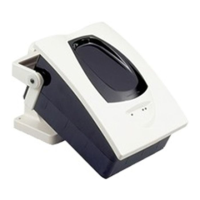
